Features
The Ultimate, Best And Biggest Seafood Platter In Goa: Souza Lobo’s Seafood Tower!
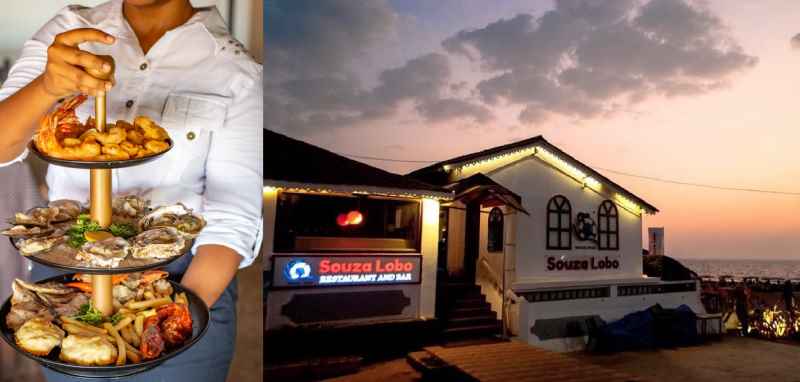
CALANGUTE, GOA: If you are a sea-foodie and crave for truck loads of fresh seafood, then there is just one place you gotta go! That’s when you visit Goa.
When you are in Goa, don’t forget to drop in to Souza Lobo at Calangute, the cute restaurant right on the beach.
Winner of the “Best Seafood Restaurant Award” and a culinary institution in its own right, the 90-year-young fine-dine, traditional Goan and fusion cuisine place has introduced the Seafood Tower, which is a mouth-watering array of fresh, succulent sea-food items including King Prawns, Mussels, Oysters, Crab claws, grilled and baked portions of different types of fish and several other tempting and delicious items like fish tikka (tandoori option) or Recheado Prawns, Stuffed Crab and Lobster meat.
Depending on availability of seafood and your choice of say spicy or non-spicy, Indian, Goan or international, you can chose from a variety of the ‘catch of the day’ and request the chef to make up your own Seafood Tower combination.
You can choose traditional Goan (Recheado Prawns), North-Indian (tandoori fish or fish tikka or tandoori crab) or continental style seafood like baked crabs, butter-garlic lobster, etc., to make your own Seafood Tower, of course depending on season and availability of the seafood items.
As the Souza Lobo post says, the ravishing Seafood Tower that’ll set your taste buds ablaze, never fails to amaze seafood lovers from any where in the world.
Features
When will Vasco’s Maimollem Lake be clean again, demands activist Ularico Rodrigues?
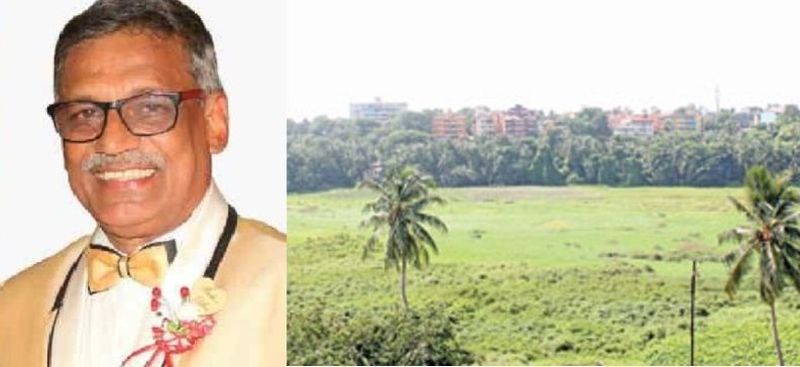
VASCO, GOA: Once a picturesque green locale in the 1980s, Maimollem Lake, located at the heart of the Mangor, New Vaddem/Shantinagar valley is now an environmental nightmare. It is full is pollutants, sewage water, dangerous chemicals, micro plastics and other thrash that will make you throw up.
According to news reports, the lake used to be quite clean and people could even drink the water untill 1983-84. “With the mushrooming and rapid rise of illegal shanties and slums at Mangoor Hill, Shantinagar and New Vaddem, the untreated sewage released into gutters and storm water drains connected to the lake the degradation began. Eventually, the quality of the lake water began to decline drastically and with the growth of the local slum population, the pollution levels reached a stage where even animals fear to drink the water, which is not even suitable for washing or cleaning. Contact with the skin can give you a bad rash or even worse. Today after 30 years it is a pool of garbage and stinking sewage,” says local activist Ularico Rodrigues.
“While the Maimollem lake recieved a Central grant of Rs 1 crore in the first phase for its revival under the ‘Amrut Sarovar Abhiyan’ programme last year, hardly anything seems to have been done or changed. It’s over a year now and waste water, sewage, garbage and plastic waste is still flowing into the lake unhindered,” Ularico lamented.
The Mormugao Municipal Council (MMC) had begun the exercise of de-weeding and removing water hyacinth and other weeds and plants in the lake last year, with talk that the tourism department wanted to develop the lake into a tourist spot. But a lot still remains to be done. Arresting the seepage and flow of untreated waste and pollutants is the need of the hour and all attempts to otherwise revive and rejuvanate the lake are of no consequence, Ularico who is a Lions Club members explains.
In April-May last year, there was some activity and steps were taken to clean up the Maimollem Lake, but it is now back to its old, ruined state again, with sewage and pollutants flowing into the lake basin. Starting from 2003 till date, several attempts were made to clean up the lake, but to no awail. Huge sums have already been spent, but except for cosmetic touches, not much changes over time, Ularico claims, adding that a foul stench emanates due to the presence of sewage, rotting animal and human feaces and other matter in the lake. There is an increase in vector borne diseases in the area surrounding the lake with diseases like Malaria and dengue on the rise in the locality.
Features
Specially customised B747 jumbo jet arrives in Namibia to bring eight cheetahs to India

WINDHOEK, (PTI): A specially customised B747 jumbo jet has arrived here in the Namibian capital to bring eight cheetahs to India’s Kuno National Park in Madhya Pradesh where they will be re-introduced after the wild cats faced extinction in the 1950s.
”A special bird touches down in the Land of the Brave to carry goodwill ambassadors to the Land of the Tiger,” the High Commission of India in Windhoek tweeted on Wednesday.
Eight cheetahs, five female and three male, will be brought to Jaipur in Rajasthan on September 17 in the cargo aircraft as part of an inter-continental translocation project. They will then be flown from Jaipur to their new home — Kuno National Park in the Sheopur district of Madhya Pradesh — in helicopters.
Prime Minister Narendra Modi will release these cheetahs into the Kuno National Park in Madhya Pradesh on his birthday on September 17. The aircraft bringing the cheetahs to India has been modified to allow cages to be secured in the main cabin but will still allow vets to have full access to the cats during the flight.
It has been painted with the image of a tiger. The aircraft is an ultra-long range jet capable of flying for up to 16 hours and so can fly directly from Namibia to India without a stop to refuel, an important consideration for the well-being of the cheetahs.
Cheetah will have to spend their entire air transit period empty stomach, a senior Indian forest department official said on Tuesday.
Such a precaution is needed as a long journey may create nausea-like feelings in animals leading to other complications. The large carnivore got completely wiped out from India due to their use for coursing, sport hunting, overhunting and habitat loss. The government declared the cheetah extinct in the country in 1952.
The last spotted feline died in 1948 in the Sal forests of Chhattisgarh’s Koriya district.
Starting in the 1970s, the efforts of the Indian government to re-establish the species in its historical ranges in the country led to the signing of a pact with Namibia, which donated the first eight individuals to launch the Cheetah reintroduction programme on July 20 this year. (PTI)
Features
As Feni prices double, stakeholders in Goa fear sale of spurious or artificial products
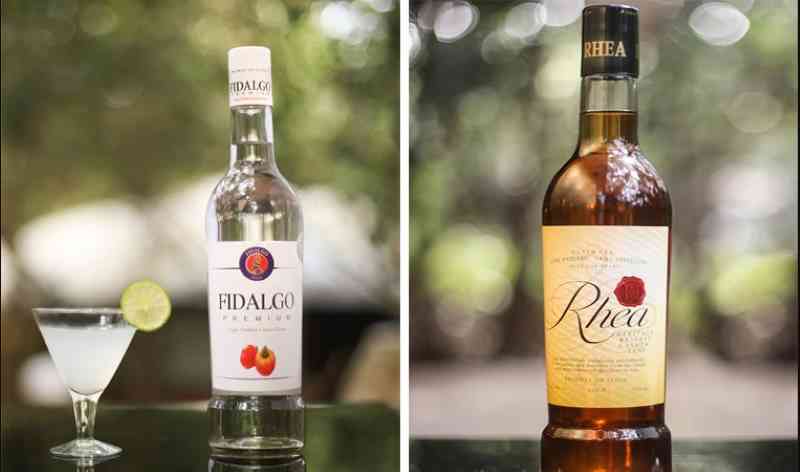
PANAJI: Tipplers in Goa are a worried lot and it is not just the rising prices of petrol, diesel or cooking gas that is bothering them.
Goa’s heritage brew, Feni, which has a GI or Geographical Indicator, has become dearer for the average Goan, with its cost rising from Rs 4,000 per can (35 litres) to Rs 7,000 to 8,000, more than double, claims an IANS news report.
Manufacturers and stakeholders have expressed fear that miscreants may start a making spurious and artificial versions of the popular drink using artificial ingredients, chemical flavouring and industrial alcohol.
Feni, the most popular local drink of the coastal state, along with Urrak was notified as a state heritage drink by the Goa government in 2016.
While Cashew Feni is more popular, Feni is also prepared from Coconut.
The Cashew Feni from Goa is also the country’s first indigenous liquor to obtain a Geographical Indication tag, a process which was initiated by local Goan manufacturers of the brew in 2009 to ensure that its traditional manufacturing process was not replicated in other parts of the country or diluted by mass manufacturing.
According to local manufacturers, an unprecedented drop in cashew production in Goa due to unseasonal rains last season, has in turn affected the production of Cashew Feni.
“We were expecting the price of Cashew Feni may be hiked by 20 to 30 per cent. But to our surprise, it has almost doubled compared to last year. Now Feni producers are charging Rs 7,000 to 8,000 for a single can of 35 litres. This rate will remain constant till the next production is done,” Shailesh Naik, a retailer, told IANS.
The increased rate has also fuelled fear of spurious versions of the traditional brew, which is one of the cheapest drinks in Goa.
‘Urrak’ is obtained from the single distillation process or first distillate, while once double distilled, the drink is referred to as Feni.
Urrak, a seasonal drink containing alcohol, is consumed with lime juice and is very popular in local bars and taverns. Feni is also blended with spices like clove, pepper, nutmeg and cinnamon to make another variation called ‘masala Feni’, though the original double distillate is most popular.
Speaking to IANS, Mac Vaz, founder-president of Cashew Feni Distillers and Bottlers Association, said that the price hike is due to bad crop yield, which has been caused by the unseasonal erratic rains.
“But the main concern is not the escalated price of Feni. We fear that some stakeholders might try to fill in the shortfall by making spurious versions of the drink,” said Vaz, who is also an exporter and bottler of the popular Feni brand, ‘Big Boss’.
He also said that the increased rate will impact the Feni manufacturing industry.
Abhay Khedekar, a Feni manufacturer, said that prices have gone up as the production of Feni is almost half this season.
“There is a lot of demand for Feni from local retailers, particularly during the monsoon,” he said.
With inputs from IANS
Features
Carambolim lake or Carambolim wetlands to be converted into Carambolim Bird Sanctuary: Shirodkar

PANAJI: Water Resources Minister Subhash Shirodkar who visited the Carambolim lake on Friday, came down strongly against encroachment around the lake boundaries, promising to ensure that the wetlands around the Carambolim lake are protected and the place is declared a bird sanctuary.
The Carambolim lake lies in Ilhas taluka, about 12 km from Panjim or Panaji and 2km southeast of Old Goa. It is spread over an area of 70 ha, of which 40 ha is under water for most of the year.
In order to grow paddy, a number of minor irrigation tanks were developed in Goa. These tanks are made by the impoundment of run-off during the monsoon.
They are also a natural source of fish, because every year, before the monsoon, the remaining water is drained out to empty the tanks and the fish are harvested.
The sluice gates of the Carambolim lake at the south-eastern side are kept closed from late July to early May next year. The impounded water is used for irrigation of paddy fields in the lower reaches on the southern side of the lake.
According to the Goa Tourism website, the lake is of the most famous and picturesque lakes in Goa, and has the added attraction of also being a great place for bird-watching. The manmade lake plays host to a number of species of birds, both resident and migratory. The lake and the forested area around it are so famous for its avian population that it has since been declared the Carambolim Bird Sanctuary.
This peaceful and serene lake is counted not just as one of the best places for bird watching in Goa, but also one of the best places in India for bird watching. The birds here are of both aquatic and terrestrial types and although they are mostly herbivorous, there are also some avian fishers among them.
Features
Goa should focus beyond its beaches, project cultural, hinterland and heritage tourism

PANAJI: An innovative tech project – the Goemcho Goenkar project, which is archiving the culture, traditions and heritage of Goan life, spanning from the 1500 to the present, over 4 centuries, is underway as part of the Goa-Mumbai Heritage Forum effort.
There is so much to talk about Goan culture and heritage and we must focus on hinterland tourism, because that is far more richer than merely the sand and beaches, explains says Flynn Remedios, curator of the project.
The coastal state of Goa, one of India’s prime international tourist destinations, is known for its beaches, places of worship, springs, lagoons, forests, grooves, music and moreover its warm and hospitable people in the coastal zones.
The heritage and culture of Goa is influenced by several dynasties, rulers and the last of which being the Portuguese who conquered Goa in 1510, eventually ruling it for nearly 400 years.
Influenced by the Portuguese rule and Latin culture, Goa presents a somewhat different representation of the country to foreign visitors.
Major tourist attractions include the famous Kadamba-era temple located at Tambdisurla, the Basilica of Bom Jesus at Velha Goa or Old Goa, and the Safa Masjid in Ponda, among several others that consist the rich repository of Goan culture and heritage.
Most Goan youth who have lived abroad or in cities like Mumbai and Bangalore since birth have no idea of the age-old culture of Goa and how weddings or family functions were celebrated 3-4 decades ago.
The Goa-Mumbai Heritage Forum aims to create mass awareness via social media and free digital platforms which can be accessed anywhere in the world, about its rich and varied past, traditional food, clothing, existence and goemkarponn or the Goan way of life, says Remedios, who conceived the project in January this year.
We will curate multimedia content of how Goa looked 20 to 40 years ago. Its shacks, old houses, taverns, small village industry and all. With rampant development, roads, highways, bridges, new buildings, etc., the past glory of this state – particularly the coastal zones, whose topography and look is changing every 5 years, may be long forgotten, at least for those Goans who are forced to reside out of Goa for economic reasons.
It’s very imperative that a “free to access” digital library or multimedia encyclopedia of our villages, bridges, places of worship and everything that makes Goa what it is, is preserved digitally for the future.
We will feature hundreds, if not thousands of videos and millions of photographs of every part of Goa, coastal regions and interior villages alike, and interviews with prominent personalities, cultural and youth icons in this mammoth digital archive, Remedios explains.
Each constituency, village and cultural zone will be covered in depth and individually, so if you want to know how your forefathers cooked food in Panchwadi, Shiroda 50 years ago with images and videos, or how Goan youth played football in Navelim, 70 years earlier, or how artisans made the traditional kunbi fabric in the tribal villages of Goa, Goemcho Goenkar and Goa Mumbai Heritage Forum will have that for you in a digital 4D format, accessible from anywhere on the planet.
Features
With yeoman efforts of Curtorim MLA Reginaldo Lourenco, “Saxtticho Koddo” achieves a first in Goa
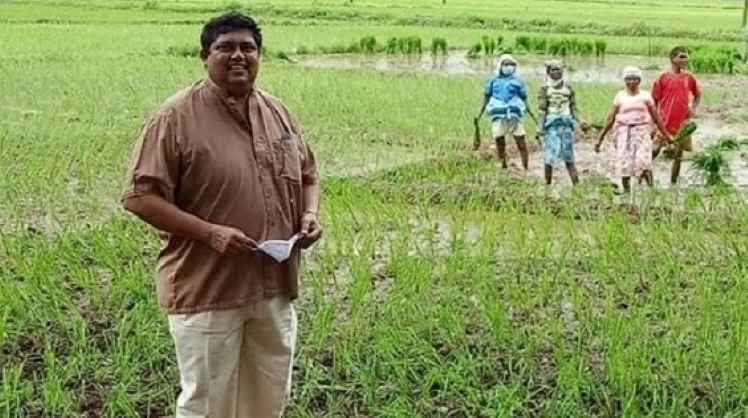
PANAJI: With 2021 coming to a close, the farming locale of Cutorim in South Goa, also known as “Saxtticho Koddo” or the granary of Salcete, gets decked up for Christmas and the festival season, farmers in the otherwise laid-back, predominantly Catholic village in South Goa look back on their harvest and the year that was.
While the dark shadows of the ghostly Covid-induced lockdown still haunt the village-folk, the constituency has unwittingly achieved a prominent milestone in the entire State of Goa.
Curtorim is located on the banks of the river Zuari, in South Goa. The residents of this village have over centuries built a bond with rice and farming, so profoundly that it earned the village the title of “Saxtticho Koddo” in Konkani, which when translated into English means “The Granary of Salcete”. As a matter of fact, today Curtorim can be easily called the rice granary of Goa.
Firstly, a team of 60 community farmers transplanted 1,15,000 m of land in Maina Curtorim in July this year, through an initiative called ‘7 to 7’ spanning 12 hours, achieving a record of sorts.
The farmers successfully replanted hundreds of paddy seeds covering 25 acres of farmland within a day’s time.
“We are trying to offer solutions to the problem of labour shortages and the non-availability of machines. We are working on getting the task done sooner, with efficiency and on time,” Fr George Quadros, who led the project was quoted as saying by the Times of India in its July 2021 report.
This community farming initiative was taken up without availing of the Directorate of Agriculture’s community farming scheme with the farmers transplanting about three lakh square metres in the village over a period of time, and eventually covering a total of four lakh square metres of land this season.
And all this would not have been possible without the help of MLA Aleixo Reginaldo Lourenco, who chipped in with tractors and other mechanized farming equipment, besides motivating the farmers not to give up tilling the land.
According to official records about 15 years ago, the total farmland under cultivation in Lourenco’s constituency (when he was first elected MLA) was less than 35 percent and fast dwindling. Today it’s more than 95 to 97 percent, earning Curtorim the moniker of “food granary of Salcete” or rather of the entire state. By next year, 100 per cent of the farm land will be under cultivation, Lourenco has promised.
Were it not for MLA Lourenco and his team, who provided local farmers with modernized technology such as harvesting and sowing machines, tractors and other equipment, they would have long abandoned their fields and the concept of mechanized farming would have never seen the light of day.
Mechanized cultivation that was stuck to only 50,000 square metres for a long time in Curtorim, this year crossed around 4 lakh square meters of agricultural land, the Herald confirmed.
And prodding the 40-odd farmers of Maina-Curtorim to reach the 4 lakh square meters mechanized cultivation target was Lourenco’s team working in the background with Fr Quadros leading the way.
Speaking to the Herald, one of the farmers from Maina, John Rebello was quoted as saying: “in the earlier days all the farmers were engaged in cultivating the fields manually and it used to take a lot of time, besides manpower and money. However, with the blessing of ‘Khandi Khuris‘, we shifted to mechanized cultivation. Fr. George Quadros has shown us the way out when a maximum number of farmers faced hardships in order to take forward the tradition of farming.”
Rebello claimed that nearly 4 lakh square metres of fields, belonging to 40 farmers have now shifted to mechanized cultivation. “Now, we can meet our requirements and also make a profit out of the produce by selling it”, he said.
And all this would have never have been possible, if Lourenco had not to do his bit – help the farmers with mechanized implements to achieve this noteworthy goal, that both Curtorim and the entire State of Goa is proud of!
Features
With A Push By Wilfred D’sa, Aqua Culture & Crab Farming Picks Up In Nuvem
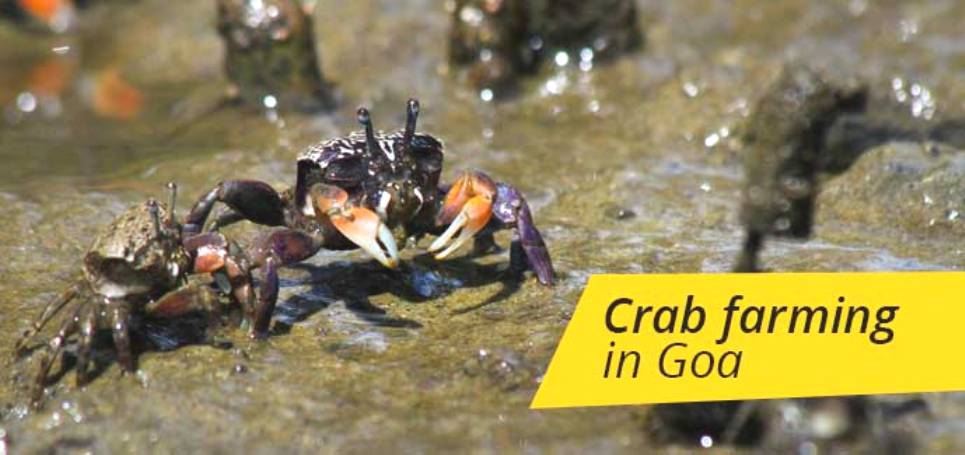
Margao, Goa: With a strong push from the local lawmaker Wilfred D’sa, crab culture and crab farming along with other aquaculture activities like mussel and shrimp farming has picked up in a big way in Nuvem, with more and more locals opting for the otherwise lucrative business.
‘Kurlio’ or Crab is a highly priced, much sort-after dish at restaurants along the coastal belt and is a big hit with tourists, including foreigners who relish the baked crab, butter and pepper crab.
Among domestic tourists the tandoori crab is most popular and is a highly priced item on the menus of most seafood restaurants in Goa.
Crab is an all time favourite among Goans and domestic tourists as well and undoubtedly one of Goa’s flagship seafood platters is incomplete without the crab.
Among Goans the lip smacking ‘Crab Xacuti’, ‘Crab Xec-Xec’ and stuffed crab are relished dishes.
It’s business potential is immense and along with shrimps and mussels is the “renewable hidden gold” provided to Goans by nature, which has been overlooked for decades.
Unfortunately, Goans are after quick money be it in tourism or mining – both sectors which have been overexploited and have now left thousands of locals in the doldrums with dead investments.

Spearheading a new revolution: MLA Wilfred D’sa with farmers at Nuvem
Goa is gifted with 101 km of coastline is planning to harness the coast as well as its main rivers; Mandovi, Zuari, Terekhol, Chapora, Kushavati and the Sal whose backwaters and brackish waters are the ultimate breeding ground for crab, shrimp and mussel farming.
However, the high initial investment was a damper for most locals willing to take up crab farming in their villages.
Besides the high cost of labour and the anti-migrants activism by some groups in the coastal state had made crab farming very expensive and not competitive enough when compared to say Sindhudurg district of Maharashtra and in Kerala, says Netta D’souza, a resident of Nuvem who is keen on starting crab culture in the area.
Obtaining permissions from local bodies is another headache in Goa and even if they get permissions, local activists play spoilsport, said a spokesperson for Goemcho Goenkar, adding that coastal land that is most suitable for crab farming is owned by communidades and obtaining permission from them is a nightmare as activists start objecting and protesting even before an entrepreneur can start his business.
Sensing the reluctance of locals, MLA Wilfred D’sa and volunteers of Goemcho Goenkar have taken up the task of educating Goans on the long-term benefits of crab, shrimp and mussel farming.
Two crab farms will be a reality soon in Nuvem with the support of D’sa who is determined to make his constituency fully self-sufficient in farm produce, vegetables, fruits and seafood.
Goemcho Goenkar is providing support and assistance for home horticulture, organic kitchen farming, shrimp, mussel and fresh water fish farming, crab culture, aquaculture and strawberry farming in Goa. If you are interested please send your details and more about yourself on email to goemcho.goenkar AT gmail.com
D’sa has provided farmers in Nuvem with tractors and other implements and is strongly advocating home farming in every household in his constituency.
Crablets or crab seeds are also being made available to those interested in taking up the activity in Nuvem, after training.
Another location shortlisted for crab farming is ponds and water bodies in Curchorem, said Sheetal Naik of Goemcho Goenkar. We identifying another breed or species of crab that can be grown in smaller areas in fresh water, she said.
Goemcho Goenkar is sourcing crab seeds or crablets from the Marine Products Export Development Authority (MPEDA) hatchery in Tamil Nadu which mass produces seeds and is one of the few mud hatcheries in the world.
The scylla oceanica species of mud crabs are preferred as this variety of crab grows to a maximum size of 1.5 kg and will not cause any damage to bunds or fencing arrangements in the culture system. The average weight of this crab varies from 500 gms to 900 gms, which is the ideal size for local sale.
The cost works out to Rs 3-4 per seed and each seed can generate Rs 1000 to Rs 1500 after the nine month period of harvesting. Another variety of crab can grow quicker, but requires a specialized, artificial environment, which is expensive to set up, says Flynn Remedios of Goemcho Goenkar.
Besides, the scylla oceanica species of crab can be harvested in estuaries, backwaters and coastal areas as well as artificially created ponds or trenches. They can survive easily on fish surplus, fish waste or rough fish for feed, which is not very expensive and easily available in the State.
Goemcho Goenkar is conducting seminars and training programmes across the state on crab, mussel, shrimp and fresh water fish farming, along with kitchen farming and home horticulture.
The first seminar was held on Sunday at Ponda. Margao, Shiroda (Bethoda), Curchorem and St Cruz in North Goa are next on the list. Those interested in crab, shrimp, mussel and fresh water fish farming can contact Goemcho Goenkar on goemcho.goenkar AT gmail.com.
Features
Curchorem Locals Embrace Kitchen Farming And Home Horticulture Farming
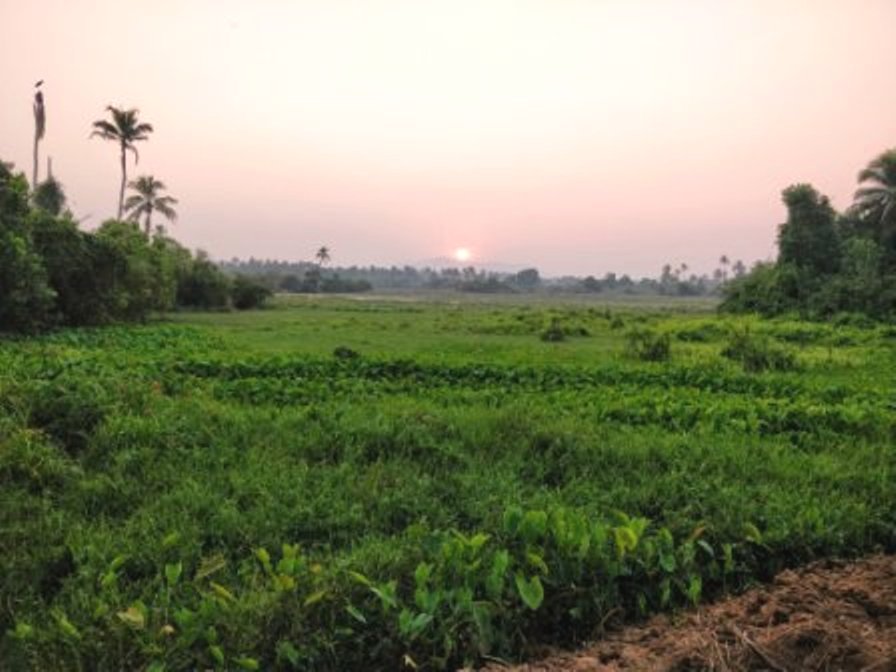
Curchorem, Goa: A unique drive to promote horticulture and home or garden cultivation of fruits and veggies and other farming activity by Goemcho Goenkar in Curchorem, aims for a 30 percent increase in overall farming activity and farm produce in the area over the next 12 months.
Fruits and vegetables which can be easily grown in the soil available in Curchorem will be given priority over other food or farm items which cannot grow in the naturally available soil.
An initial survey indicated that the outskirts of the town may also be suitable for poultry farming, which needs to be explored.
Goemcho Goenkar will provide the home farmers, kitchen gardeners and horticulture farmers with organic fertilizer, saplings, seeds and other farming tools, implements and expertise in the form of training sessions, to motivate more and more people to take up home farming in Curchorem.
We want to popularize the concept of organic kitchen gardening or kitchen farming and expect hundreds of families to take up kitchen gardening and growing fruits and vegetables in their backyards.
Organic and fresh are two sacred words that not only appeal to fitness freaks, but also to every health-conscious person. Many people splurge on imported, advertised ‘natural’ products, when some of the best sources of a healthy diet can be grown and produced in one’s backyard, says Albert Fernandes who is associated with the project.
Fatima Figueiredo, sister of globally-celebrated Goan artist Mario Miranda, has been farming since 2012 on her ancestral land in Nuvem that was lying barren for decades. She is one of the glowing examples of locals who have taken to farming in a big way in South Goa and her success story is an inspiration to many.
At least 5 new mass kitchen farming initiatives will be launched in Curchorem and Nuvem in the new year 2021.
Where is Curchorem?
Curchorem also known as Kudchade is a town and municipal council in the South Goa district of Goa, and is part of Quepem taluka. Curchorem and Sanvordem are twin towns on either side of the Zuari River.
Geography
The confluence of Uguem and Guleli rivers at Sanguem or Sangam is known as the Zuari river. It runs north west up to Sanvordem. Further it runs up to the west till Kushawati River and joins at Xelvona. Then again it changes direction to the north till it reaches Panchwadi near Shiroda and further flows up to Rachol. It again flows up to the north to Borim, near Ponda and further north-west up to Racaim, Durbhat and finally into the Arabian Sea near Mormugao.




















































